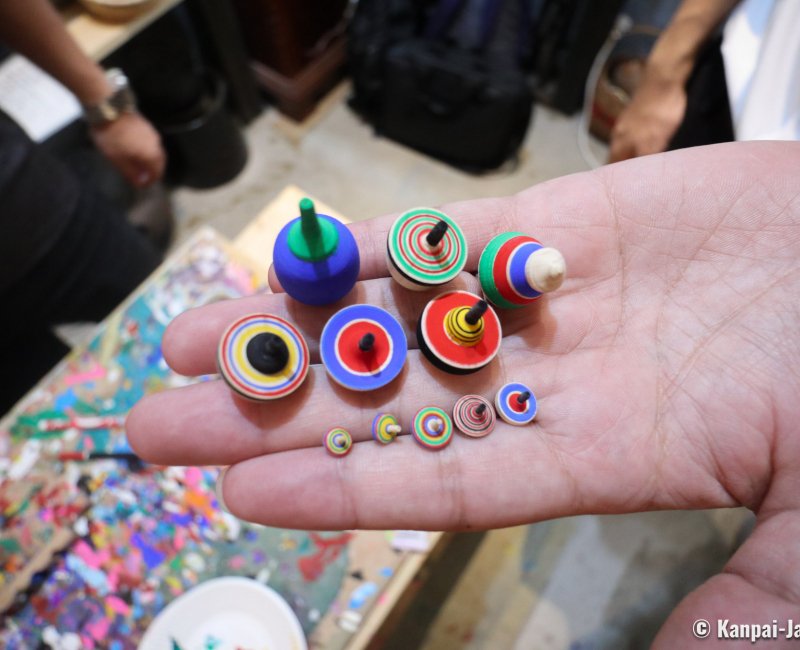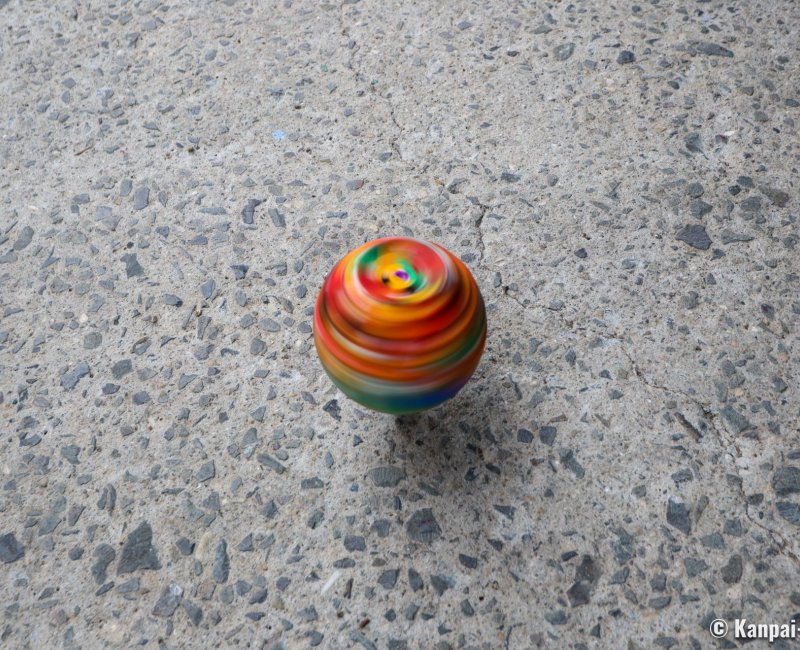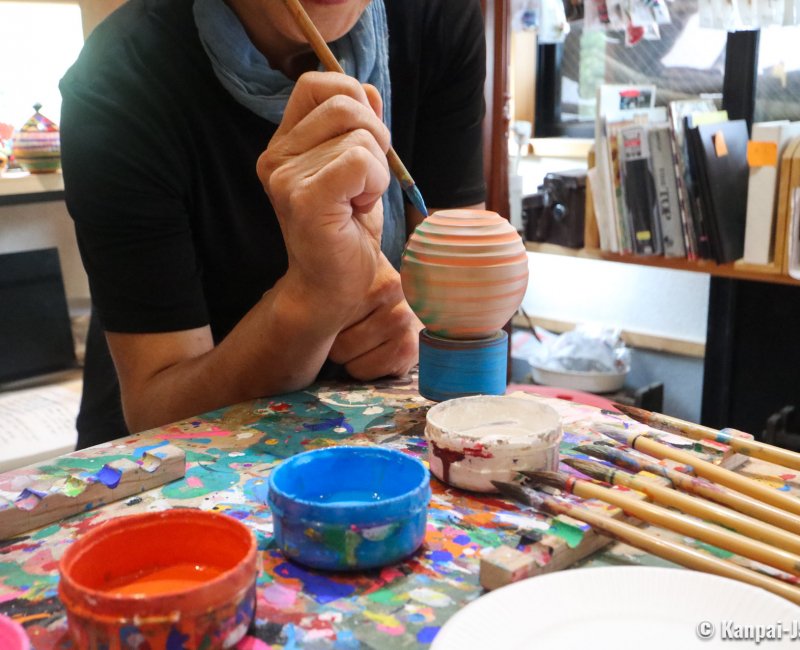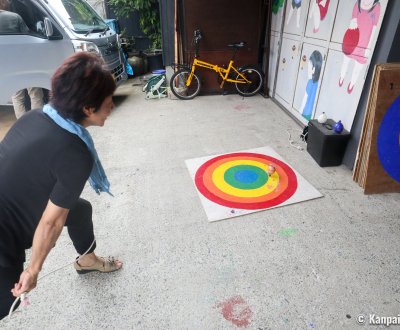Sasebo Spinning Tops
Sasebo-koma, a Local Craftsmanship
Sasebo spinning tops are traditional toys only made in the eponymous city, located in Nagasaki prefecture on Kyushu island. Also called Sasebo-goma, it is the locals’ pride and contributes to their town’s fame to such extend that collectors come from all over Japan (and even from the world) to purchase one of its unique tops.
There are several types of spinning tops in Japan: flat, curved, triangular, etc., however, those made in Sasebo have a distinctive look: a round body whose shape is halfway through an onion and a shallot, topped by a diamond-shaped metallic tip used as the toy’s rotation axis. They are mainly made of a Japanese oak tree species called matebashii, selected for the hardness of its wood.
Their decoration is traditionally codified with colors chosen from the Chinese cosmology’s five elements:
- Black for water,
- Red for fire,
- Yellow for earth,
- Green for wood, and,
- White for metal.
Black and white also represent the Yin and Yang.

Origins of the spinning top game in Japan
Spinning tops were introduced in Japan from China and the Korean peninsula before the 8th century. First played within the imperial family and its circle, the game was only popularized from the 14th century, with the appearance of spinning top fights.
During the Edo period (1603 - 1868), spinning top fights were so popular that the government had to frequently forbid them in order to regulate the excessive betting they could arise, at at time when most of gambling games were outlawed. The tops used had a "classical" shape and their handling required great skills.
A new type of wooden top surmounted by a metallic tip appeared at the same time: it was the prototype of the Sasebo spinning top.

How to spin a Sasebo top?
In practical terms, a rope is necessary to rotate the Sasebo spinning top after it is thrown, following these steps:
- Place the metallic tip upward,
- Tightly wind the rope around the tip and the top’s body, until about the middle of the top, and hold the remaining rope with fingers,
- Throw the top and pull on the rope simultaneously.
Pulling on the rope gives speed to the top, so it turns over and fall 🍁 on the metallic tip that becomes the rotation axis on the ground. It takes several tries before achieving a good rotation, but it is part of the fun and the game quickly becomes addictive.
Amateurs of spinning top fights will be interested by the Sasebo Great Top Tournament (新春独楽廻し大会 Shinshun Koma Mawashi Taikai) staged by the city every January 2. About 150 persons participate in the game to open the New Year.

Sasebo-Koma-Honpo workshop
Sasebo-Koma-Honpo is the official shop for Sasebo spinning tops. It is the place where they are made, painted by hand and sold. It is moreover possible to take part in a spinning top painting workshop, provided reservation by email or phone.
Beside the manual activity, the owners of the shop display the various fabrication techniques of original tops, and during the break, it is also possible to watch an artisan actually making a spinning top.
The workshop continues with demonstrations of top throwing, and after a few tries at mastering the toy, a top fight can take place between the owners and the visitors. Beyblade has better watch out!
To purchase one of these toys, allow from ¥800 to ¥50,000 (~US$5.10 to ~US$318.60) depending on the type of Sasebo-koma and its use. Naturally, the most expensive ones are intended for decoration rather than for playing.

